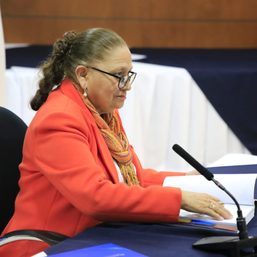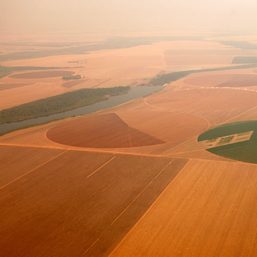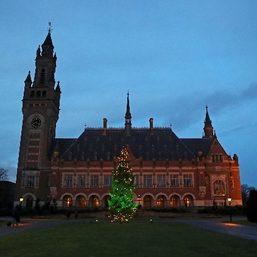SUMMARY
This is AI generated summarization, which may have errors. For context, always refer to the full article.
(Editor’s Note: This story is first published by Newsbreak.)
MANILA, Philippines – There are many reasons why the actions of the late dictator Ferdinand Marcos continue to scar the nation. One of these involves his policies in parceling out land.
To this day, the Buhid, one of the indigenous peoples of Mindoro, have not exercised full ownership of their 94,022-hectare land due to a Marcos law, Presidential Proclamation 2282 (PP2282), which allowed certain lands to be used mainly for agricultural development.
Marcos’s law, which introduced the Kilusang Kabuhayan at Kaunlaran program, set aside 1.5 million hectares of land for agricultural development. The problem with this, according to Dave de Vera of the Philippine Association for Intercultural Development, is that some of the lands covered under KKK are ancestral lands, such as those owned by the Buhid.
De Vera added that PP 2282 overlaps with 51 other certificates of ancestral domain and titles all over the country.
The intention of PP282 and the Indigenous People’s Rights Act, which pushes for the recognition of ancestral domain, is inherently good. Both aim to distribute lands to important and often deprived sectors of the society.
But what made the implementation of both laws problematic and messy is the lack of a national land use code that would classify, once and for all, what lands should belong to whom and should be used for what.
The national land use code, which has been languishing in Congress for years, would provide a framework for the allocation, use and management of the country’s land resources.
Without such a policy, the landless would be more often than not, be pitted against the landless too. “Magsasabong gutom sa gutom,” De Vera said.
‘Crazy policies’
There are two other laws that also overlap with PP 2282 and IPRA.
These are the Mining Act of 1995 and the National Integrated Protected Areas System (NIPAS). One requires the utilization of the land, the other calls for its protection.
The two contradicting mandates of these laws—and its repercussions—could be gleaned from the case of Sibuyan Island in Romblon.
The 445-square kilometer-island, called the “Galapagos of Asia” for its rich resources and unique location, is home to a national park, Mt. Guiting-Guiting, which was declared as such by former President Fidel Ramos in 1996.
Under NIPAS, it is the protection and management board, not the whole indigenous community, that oversees the national park. This board is composed of the following:
- regional executive director
- representative from the autonomous regional government, if applicable
- provincial Development Officer
- representative from the municipal government
- representative from each barangay covering the protected area
- representative from each tribal community
- at least three representatives from non-government organizations/local community organizations
- one representative from other departments or national government agencies involved in protected area management.
The Mangyan taga-bukid tribe, however, got certificate of ancestral domain titles over lands which also formed part of the said national park.
While this poses a conflict as to who has the right to oversee the conservation of Mt. Guiting-Guiting, De Vera said that it might be easier to reach a compromise because the Mangyans are the natural caretakers of the said mountain.
What is harder to resolve, De Vera said, is the prospect of mining companies operating in the area.
In 2010, Altai Philippines Mining Corp., a Canadian firm, secured a Mineral Productions Sharing Agreement permit from the Department of Environment and Natural Resources. This means the firm could extract minerals from the island.
There are 21 other mining applications targeting Mt. Sibuyan, but it has been reported that its provincial government has issued a moratorium on metallic mining.
A look at how the these mining applications, as well as the CADT and the NIPAS titles, are plotted in the map of Mt. Sibuyan best illustrates the need for more coherent land-use laws. One part overlaps the other. (Check powerpoint presentation). The parameters are obviously not defined well due to these “crazy policies,” De Vera said.
A question of priorities
Aside from having overlapping laws on land use, however, the priorities of local government units and communities also decide the fate of the land.
Let’s take mining for example. Mining hasn’t really been welcomed by certain sectors in the country ever since the 1996 Marcopper mining tragedy, where tailings leaked from its storage and killed the Boac river in Marinduque.
The industry has since been equated with environmental catastrophe. Hence, there are LGUs that are against it. It’s not only mining though. There is the real estate boom, which has been happening for a few years now.
These two clearly appeal to the LGUs’ needs to earn income for their communities.
Hence, the local land use plan is largely shaped by the vision of the incumbent mayor, for example. Elmer Mercado, a former DENR undersecretary, said that this becomes tricky especially when there is change in power. “Pag may bagong mayor, may bagong land use plan uli. Ang land use, dapat long-term plan, hindi dapat nababago,” he said.
Experts agree that a national land use code would help LGU officials and the public strike a balance between these priorities.
The code would give the national government the authority to delineate what are the country’s permanent forestlands. If the vision of the code is sustainable protection, then these forestlands would not be opened for any economic activity, and the LGUs have to follow this.
Optimistic
But what are the chances the national land use code would be passed?
It has been introduced since the time of the late President Corazon Aquino but has never come near to becoming a law.
Both Mercado and De Vera, however, are optimistic that it would be finally be made into a law in 2012.
The current administration has cited it as a priority bill in the legislative executive development advisory council. “It’s more progressive now, better than the past,” De Vera said. “Kunting tulak pa,” Mercado agreed.
A committee report is now being drafted in the lower House, while a technical working group has been formed in the Senate.
Having a national land use code, though, would definitely have implications. How would it affect existing mining operations like the billion-peso investment of Sagittarius Mines Inc. (SMI) in Tampakan, South Cotabato?
Mercado said that one option, if ever Tampakan is declared a permanent forestland, is to have SMI’s mining area carved out from the rest of the territory. But that’s just one scenario.
There is no doubt that having a national land use code would raise a lot of issues, but Mercado reiterated that this doesn’t mean it wouldn’t also solve a lot of problems.
The fact that it harmonizes and rationalizes land use and gives primacy to protection is enough to give it a shot, Mercado said.
“The code is really for the future generations,” he said. – Rappler.com
Add a comment
How does this make you feel?



![[WATCH] Try This: Empanada Salteña from Argentina](https://www.rappler.com/tachyon/2023/04/try-this-empanada-saltena-argentina.jpg?resize=257%2C257&crop=765px%2C0px%2C1037px%2C1037px)

There are no comments yet. Add your comment to start the conversation.